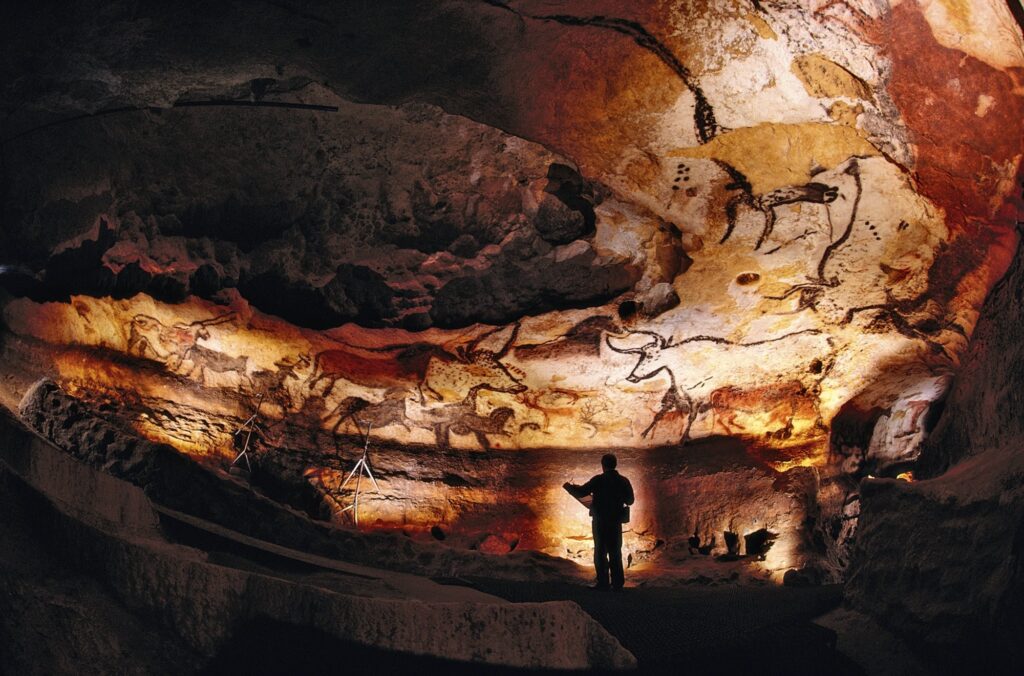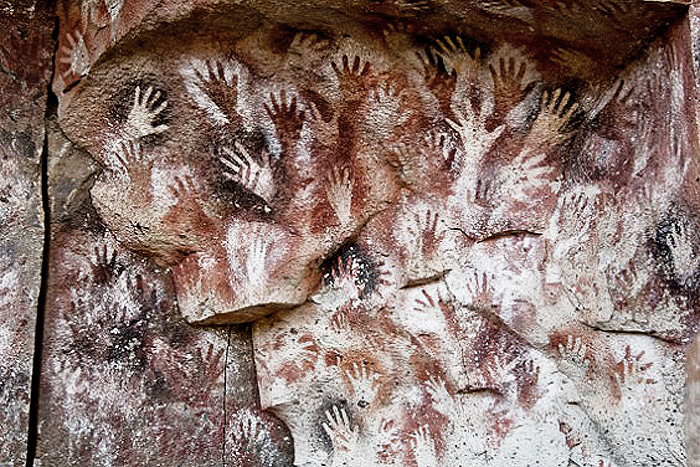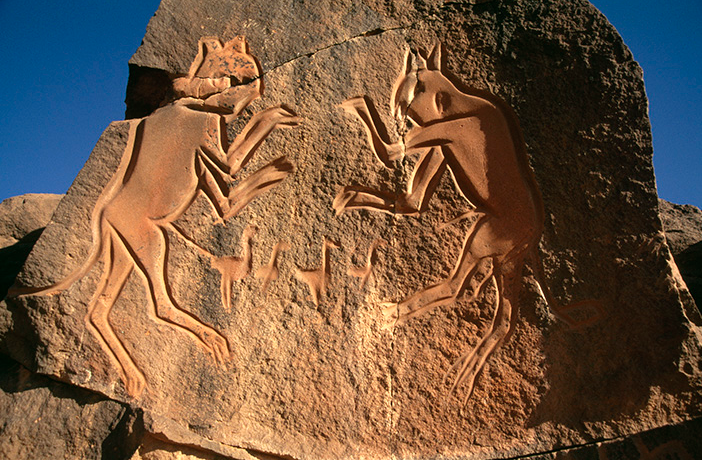Rock art in some form has been created in almost every continent of the world. It has been estimated that there are more than 50 million surviving rock art images. Our very remote ancestors may have made ‘art’ objects at an extremely early date, possibly over 700,000 years ago. These include painted and engraved marks on small pieces of bone or stone, although there is considerable debate about whether these marks were intended to be symbolic.
Some of the oldest examples of images deliberately created on fixed rock surfaces date back to the Upper Palaeolithic, around 42,000 years ago. The best known Palaeolithic rock art includes the striking, colourful depictions of animals painted in caves Altamira in Spain, and Chauvet and Lascaux in France. Not all early rock art is in caves, however. Palaeolithic carvings of wild animals have been identified on open-air rock surfaces in Portugal , Spain, Germany and Egypt.
Many other parts of the world are rich in prehistoric rock art, and it is still created or used in certain places today, such as the Kimberley region of Australia. You can read about some of these here






